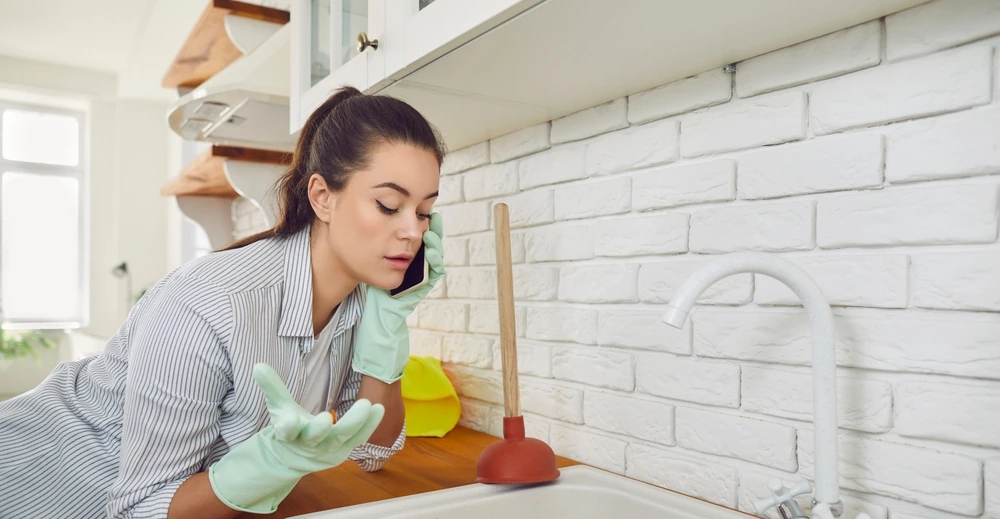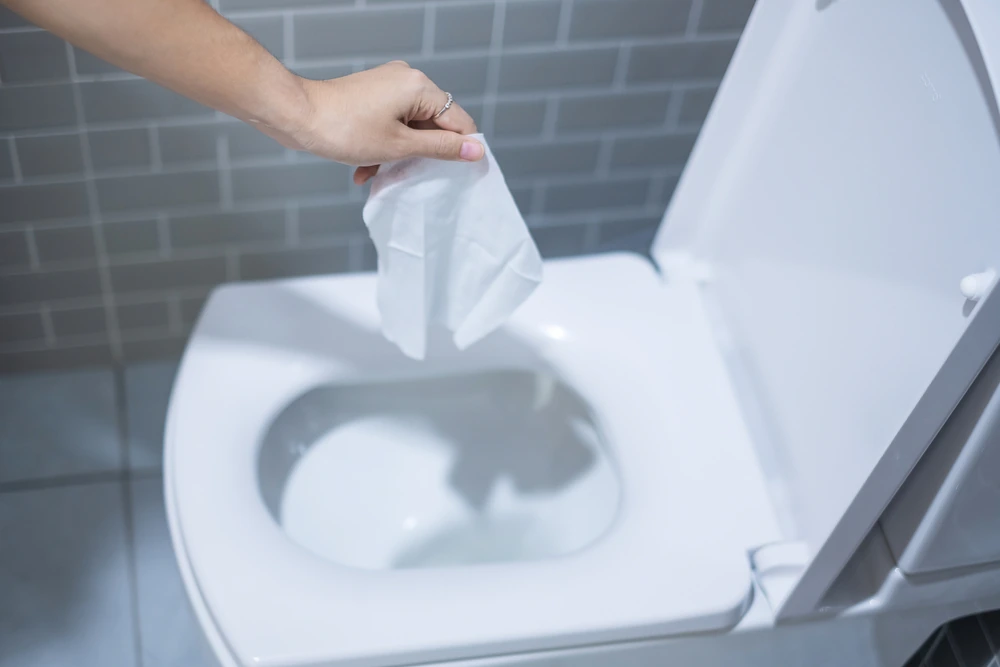Blocked Drains Brisbane: Seasonal Causes, Prevention and Expert Inspection Tips
Blocked drains are one of the most common yet frustrating plumbing issues for homeowners and businesses in Brisbane. The city’s subtropical climate, marked by humid summers, heavy downpours and tree-filled suburbs, makes drainage systems particularly vulnerable to seasonal blockages. At Plumbing Inspectors, we’ve seen how quickly minor obstructions can escalate into major problems if not diagnosed early. Our years of experience across diverse properties have taught us that awareness and early detection are the keys to keeping your drains healthy all year round.
In the following sections, we’ll look at the most common seasonal triggers behind drain blockages, how professional inspections help prevent them and the right actions to take before calling in expert help.

Unique Factors Causing Blocked Drains in Brisbane
Brisbane’s drainage challenges aren’t quite like those found in other cities. The mix of humid weather, clay soils and dense vegetation creates the perfect storm for recurring drain issues. Understanding the local factors behind these blockages helps homeowners make smarter choices in prevention and maintenance.
Heavy Rain and Flooding
Brisbane’s storm season typically runs from September to March, bringing periods of intense rainfall, severe thunderstorms and flash flooding. During this time, heavy downpours can overwhelm both residential and commercial drainage systems. Stormwater often carries debris such as leaves, mud and silt into outdoor drains, causing blockages that restrict water flow.
These issues are more common in older suburbs, where ageing or limited stormwater infrastructure struggles to cope with sudden rainfall. Compacted soil and poor surface drainage mean excess water has nowhere to go, forcing it back into household drainage lines. As a result, properties may experience:
- Gutters overflowing and pushing debris into stormwater lines
- Floodwater entering outdoor drain grates
- Pooling water or backflow appearing in driveways, courtyards and low-lying areas
Tree Roots and Expansive Vegetation
Green leafy suburbs are full of mature trees that thrive in moist soil. Unfortunately, their roots often seek out tiny cracks in underground pipes, growing inside them and forming stubborn obstructions. Local species grow deep, invasive root systems that can extend well beyond their visible canopy. Once inside the pipes, they can cause a complete collapse if left untreated. Warning signs of root invasion:
- Gurgling noises in drains
- Slow-draining sinks and toilets
- Damp or lush patches in your lawn
Grease, Fat and Sediment Buildup
Grease, cooking oils and soap residue are some of the most common causes of blocked kitchen drains. When these substances are washed down the sink, they cool and cling to the inside of pipes, forming a thick, sticky build-up. Over time, this build-up traps food scraps and other debris, gradually restricting water flow and leading to slow or completely blocked drains. To prevent this, never pour fats or oils down the sink; let them cool, collect them in a container and dispose of them in the bin.
How Plumbing Inspections Can Detect and Prevent Drain Blockages
Preventing blocked drains starts with understanding what causes them. Routine inspections by experts can reveal hidden issues long before they cause backups or flooding. These inspections go beyond surface-level symptoms, using advanced diagnostic tools to identify structural, root or sediment-related problems within your drainage system.
CCTV Drain Camera Inspections
Modern plumbers rely on high-definition drain cameras to visually inspect the inside of pipes without excavation. CCTV inspections are invaluable because they provide clear, real-time footage that pinpoints the exact source of a blockage, saving time and money while avoiding guesswork. Some of its advantages are the following:
- Detailed visibility of cracks, corrosion or intrusion
- Minimal property disruption
- Documentation for maintenance or insurance
Hydrostatic and Pressure Testing
Beyond visual inspection, professional plumbers perform hydrostatic and pressure tests to assess the structural integrity of underground drains. What does this mean for homeowners? These tests determine whether some slow leaks or weaknesses could develop into major breaks during the wet season. These tests are crucial for older homes or those with clay or metal piping.
Routine Drain Health Checks
To stay ahead of problems, schedule inspections before and after the rainy season. As professionals, we recommend biannual inspections to identify early signs of buildup, corrosion or tree root intrusion before they escalate into costly repairs or replacements. This proactive approach helps maintain both plumbing performance and property value.
DIY vs. Professional Clearing: What Residents Should Know
If your drain starts to slow or back up, many homeowners instinctively reach for a plunger or drain cleaner before calling for help. While that quick fix may offer temporary relief, it often masks a deeper problem that only professionals can fully resolve. Drainage systems face unique conditions, meaning the cause of a blockage isn’t always what it seems. Understanding when you can safely handle issues is essential for protecting your home’s plumbing system.
When DIY Methods Are Safe and Effective
Homeowners can handle minor clogs with a few simple tools and safe, natural methods. Examples are:
- Using a plunger for small sink or shower blockages
- Pouring boiling water, baking soda and vinegar for mild buildup
- Employing a manual drain snake for superficial obstructions
However, DIY methods should only be used for surface-level blockages, not recurring or deep drainage issues.
When to Call a Professional
Repeated blockages, unpleasant odours or slow drainage across multiple fixtures signal it’s time to call a licensed plumber. Professional services not only remove the blockage but also identify the root cause, ensuring it doesn’t happen again. Common cases requiring experts include tree root intrusion, collapsed or misaligned pipes or grease buildup in deeper sections.

Preventative Maintenance for Blocked Drains
Prevention truly is the best protection. Many only think about their drains when problems arise, yet consistent upkeep can save thousands in repairs and prevent the inconvenience of sudden blockages. Preventative maintenance is not just about keeping water flowing; it’s about protecting your property from structural damage, foul odours and even health risks caused by stagnant water or backflow.
Regular Drain Cleaning
Consistent drain cleaning is the foundation of a healthy plumbing system. Eventually, even the most well-maintained drains accumulate buildup that can restrict water flow. Scheduling periodic drain cleaning not only removes hidden debris but also helps detect early signs of corrosion or root intrusion before they become major repairs. Whether it’s through professional hydro-jetting, mechanical rodding or eco-friendly flushing methods, consistent cleaning ensures your drains remain free-flowing and your home is protected from unexpected plumbing disruptions.
Managing Tree Roots
Among the toughest plumbing challenges, tree roots are near the top. The city’s rich, moisture-retentive soil and subtropical vegetation encourage aggressive root growth that often targets underground pipes. Even a hairline crack can attract thirsty roots seeking water, eventually leading to complete pipe blockages or structural damage. Ignoring early warning signs can quickly escalate into expensive excavation work.
Proper Waste Disposal Habits
Interestingly, many drain blockages start inside the home rather than underground. Everyday habits may seem harmless, but they gradually form thick layers of residue inside pipes. In a warm climate, these materials solidify faster, attracting debris that eventually leads to complete blockages. Building better disposal habits is one of the simplest yet most effective ways to protect your drains. Avoid disposing of:
- “Flushable” wipes
- Coffee grounds
- Food scraps
- Oil and grease
These items can stick to the inside of pipes, forming layers that attract more debris over time.
Gutter and Stormwater Maintenance
In stormy months, clean gutters and stormwater drains aren’t optional; they’re essential. When debris accumulates in gutters, rainwater overflows and pushes organic matter into outdoor drainage systems, a common cause of blockages during the wet season. Poorly maintained gutters also contribute to roof leaks and foundation damage, compounding plumbing problems. We advise homeowners to inspect and clear their gutters at least twice a year to keep their drainage systems functioning smoothly and their properties safe from water-related damage.
Emergency Relief Steps for Blocked Drains Before Help Arrives
Even with the best maintenance routine, blocked drains can happen unexpectedly and often at the worst possible time. During storm-heavy months, sudden downpours and pressure surges can turn a slow drain into a full-blown overflow within minutes. In these moments, acting quickly and calmly can make all the difference. Knowing how to manage the situation before a professional arrives prevents property damage, limits health risks and stops the problem from worsening.
Halting Water Usage
When you notice water backing up or drains gurgling, stop using taps, toilets or appliances connected to the drainage line. This step helps reduce the pressure within the pipes and prevents overflow or flooding inside your home.
Shutting Off the Main Water Valve
If a drain overflow escalates, shutting off the main water supply prevents more water from entering the system. Locate your water metre (usually near the front boundary of your property) and turn off the valve until help arrives.
Attempting Safe Clearing Methods
You can try using a plunger for immediate relief, but avoid chemical drain cleaners, as they can corrode pipes and pose safety risks. If water fails to drain even after plunging, the blockage is likely deeper and will need professional clearing.
Protecting Your Property and Health
Move electrical appliances and furniture away from flooded areas. Should sewage appear, avoid direct contact and ventilate the area immediately. Wearing gloves and boots can help prevent contamination until experts arrive.
Blocked drains are a year-round concern, but understanding seasonal causes, investing in professional inspections and maintaining good plumbing habits can keep your home protected. At Plumbing Inspectors, our team provides tailored drainage solutions backed by experience and local expertise. Whether it’s a small clog or a storm-season emergency, we’re here to help you restore flow and peace of mind fast.



.webp)